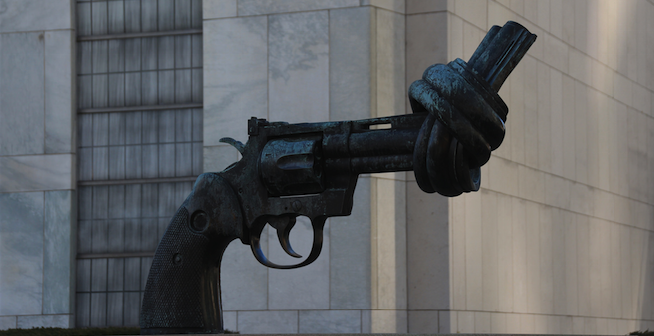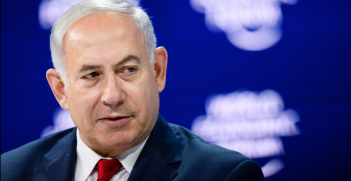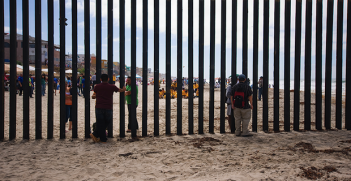The Rocky Road to Peace in Mexico

When the burnt-out van of two Australian surfers was found on a roadside in Mexico, media reports claimed that night-time travel in the country’s notorious Sinaloa state was a risk too great to take. Perth men Adam Coleman and Dean Lucas, both 33, had set off from Canada to make their way down the west coast in search of waves, yet they found themselves in cartel country. So what are the levels of violence in Mexico today compared to at the height of the drug war in 2011?
According to the most authoritative research into that country’s peacefulness, the Mexico Peace Index, released last week, the progress towards peacefulness slowed in 2015, with the homicide rate increasing by 6.3 per cent. The largest deterioration occurred in Baja California Sur where the homicide rate more than tripled, from 5.7 in 2011 to 19.8 in 2015. The rate of weapons crime increased sevenfold.
Also of concern is a trend towards increased impunity, which has deteriorated dramatically from 2007 when there were four convictions for every five cases of homicide. By 2013, there was only one conviction for every five cases. This, combined with increases in detention without sentencing and the over-crowding of prisons, points to an overstretched and under-performing judicial system.
The economic impact of violence, including the opportunity cost, is calculated to be 2.12 trillion pesos (AU$175 billion) in 2015 alone, which is the equivalent to 13 per cent of Mexico’s GDP. This corresponds to 17,525 pesos per person, roughly equal to two months of wages for the average Mexican worker.
But despite reports of uncontrolled organised crime and the kidnappings, there was a 10 per cent decline in the rate of violent crime and an eight per cent decrease in organised crime-related offences in the last year, the 2016 Mexico Peace Index shows.
In fact, it is the fifth year in a row that peace has grown in Mexico, with the country indicating drastically improved levels of peacefulness since the height of the drug war. Violent crime, homicides and organised crime have all fallen by nearly 30 per cent since those times in 2011, meaning 25 out of the 32 states in Mexico have become more peaceful in the intervening years. This includes four of the five states that ranked at the bottom of the scale back then. These improvements in peace have meant that about 85 per cent of Mexicans live in states that are more peaceful today than they were in 2011.
Greater investment in the judiciary and other structures that promote peace, such as education, will reap further economic rewards for Mexico. Already, improvements in peacefulness have generated a benefit of 802 billion pesos (AU$65 billion) in the country for the years since 2011. This represents nearly one and a half times the size of a single year of Mexico’s agricultural production.
The Mexico Peace Index is based on the work of the Global Peace Index, the leading measure of global peacefulness that has been produced by the Institute for Economics and Peace every year since 2007. It is part of a series of national peace indices, which includes the United States Peace Index and the United Kingdom Peace Index.
The Mexico edition provides a comprehensive study of peacefulness in the country from 2003 to 2015 and aims to deepen the understanding of the trends, patterns and drivers of peace in Mexico, while highlighting the important economic benefits that will flow from a more peaceful society.
With that analysis, the 2016 report presents a cautiously optimistic picture for the future of peace in Mexico. However, efforts need to be strengthened to counteract the slowdown in the improvements in peace that occurred in 2015. It is too early to determine if this is a reversal of the trend of improving peacefulness or a brief deviation.
Ideally, the revelations in the report will inform a strategic discussion among policymakers, researchers, business leaders and the public. The intention is to contribute to change and have a positive impact on the efforts to bring about a long lasting, meaningful peace in Mexico.
Camilla Schippa is the Director of the Institute for Economics and Peace, which publishes the Mexico Peace Index. This article is published under a Creative Commons Licence and may be republished with attribution.





